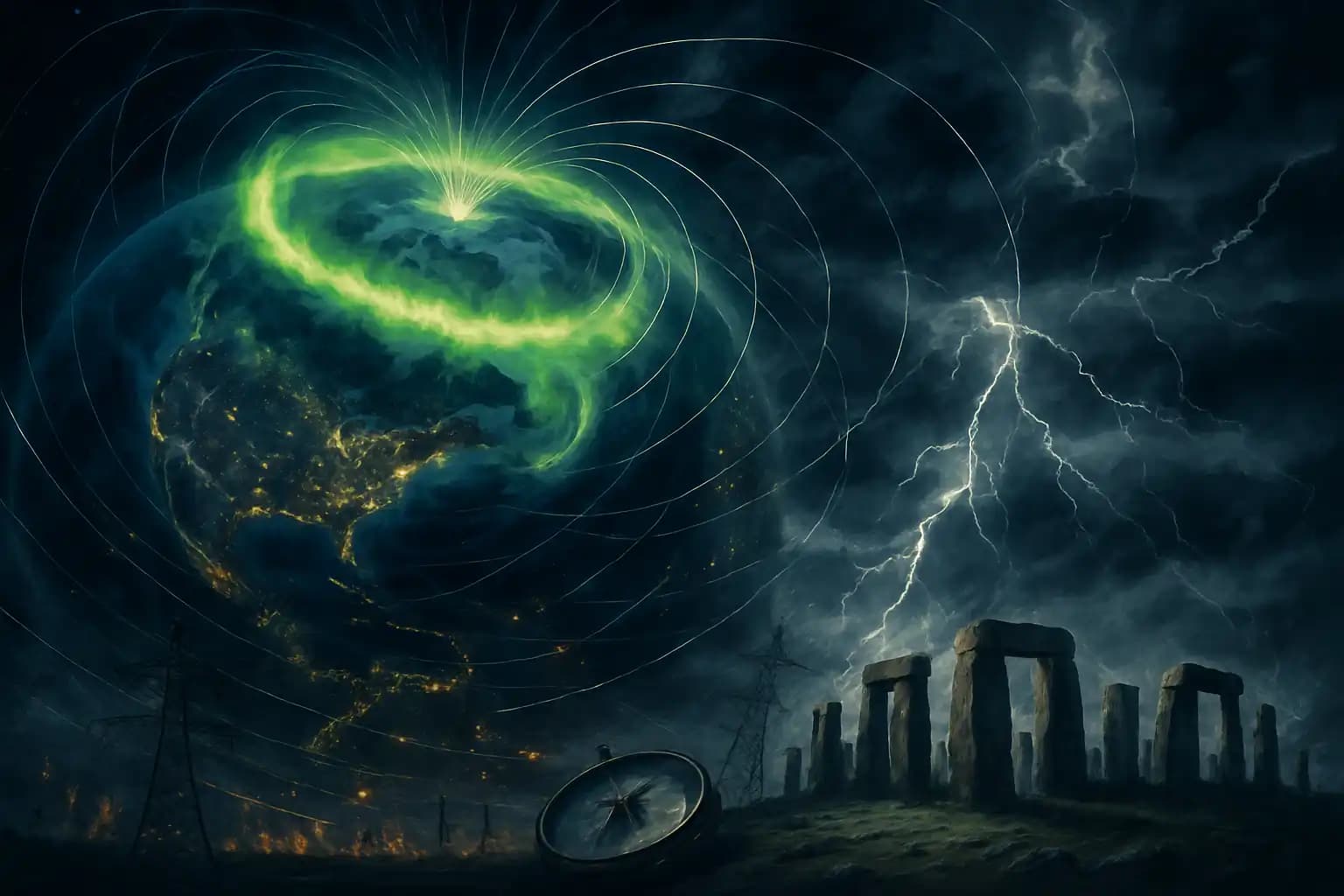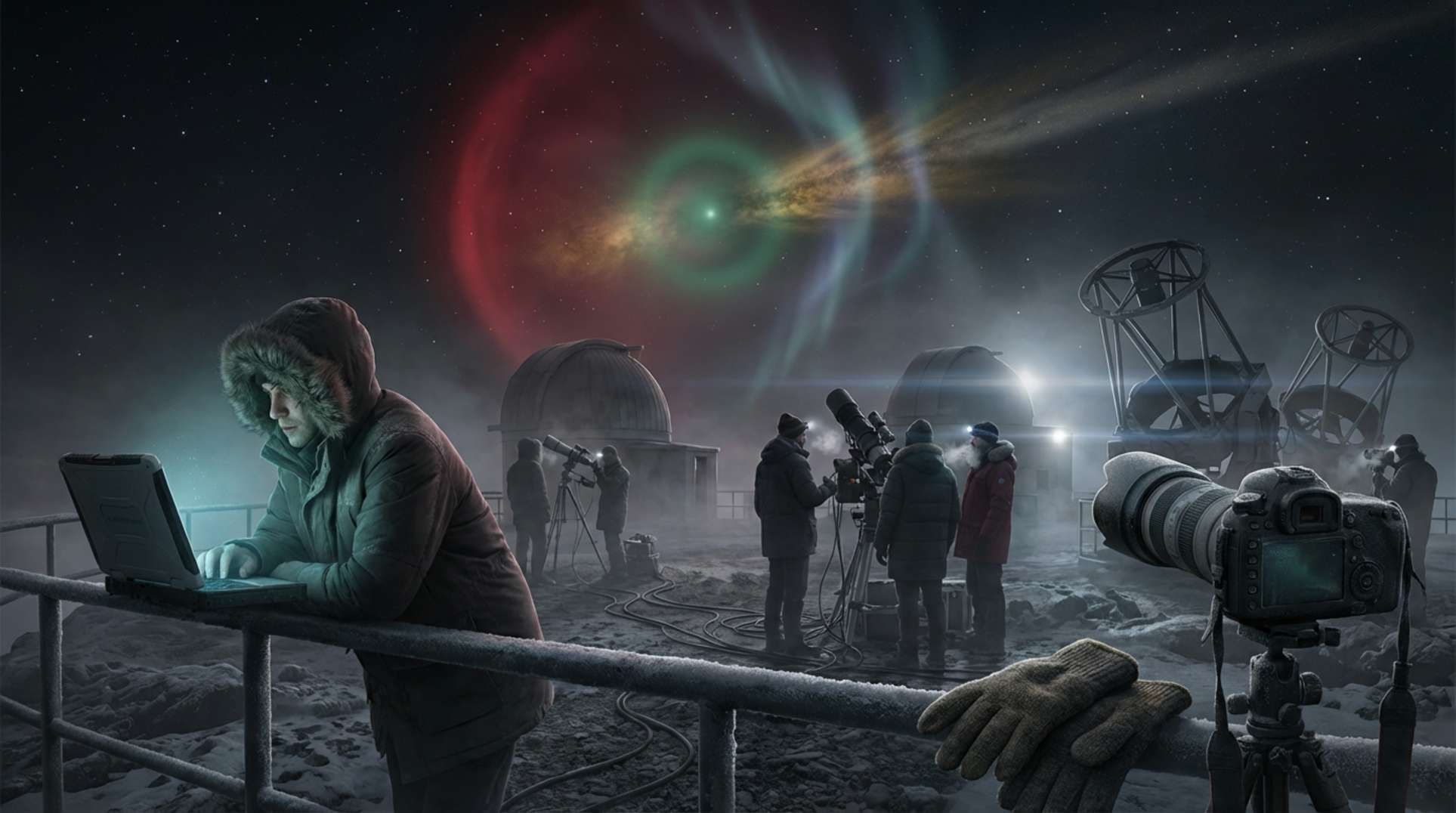Imagine waking up to find north is south, GPS is malfunctioning, and auroras are dancing over Miami. It sounds like a budget sci-fi flick, but it’s actual science: Earth’s magnetic poles really do flip. This planetary feature sounds less like doomsday fantasy and more like overdue inevitability. The inconvenient truth? Our planet’s magnetic field has weakened by roughly 30% over the last 3,000 years, and this decline is accelerating. While conspiracy forums panic, geophysicists anxiously check their solar weather alerts.
Before stockpiling lead aprons and tinfoil hats, let’s clarify geomagnetic reversal and its impact. During a reversal, the magnetic shield that protects us from cosmic rays and solar storms weakens significantly. The latest reversals demonstrate that a flip can take hundreds or thousands of years to complete (Wikipedia), but during this tumultuous time, Earth faces increased exposure to space radiation. This radiation can scramble electronics, threaten power grids, and potentially raise mutation rates in living organisms (Live Science on biosphere risks).
Geomagnetic Reversals: Science, History, and Mystery
Earth’s magnetic poles aren’t fixed. They wander, jitter, and occasionally make complete U-turns. These geomagnetic reversals have punctuated Earth’s history at irregular intervals, often aligning with mass extinctions and drastic climatic shifts. According to NASA, the last full reversal—the Brunhes-Matuyama flip—occurred about 780,000 years ago. Since then, paleomagnetic evidence in ocean floors and volcanic rocks has recorded several ‘failed’ reversals and sudden excursions.
Does our current weakening signal another reversal? Experts aren’t sure, but most believe we’re overdue. This reality means paying attention isn’t just for planetary nerds or those focused on cataclysmic resets. It’s a question of when, not if.
Magnetic Field Weakening: Why It Matters for Civilization
The magnetic shield serves as our primary defense against solar and cosmic radiation. If it collapses or fragments during a reversal, increased radiation could reach Earth’s surface. According to Horizon Magazine, this event could create temporary ozone holes, boost cancer rates, and disrupt satellites, power grids, and aviation systems. Sensitive species, including migratory animals, could lose their way. It won’t lead to mass extinction, but it could keep insurance companies and tech CEOs awake at night—and echoes concerns about solar superstorms and near-misses that nearly struck us before.
Before blaming climate change on geomagnetic drama, NASA is clear: pole shifts do not drive modern climate shifts. They exist independently, sometimes overlapping with icy maelstroms, but they’re not responsible for your unexpected January sunburn.
Electromagnetic Havoc: Communications, Power Grids, and Societal Risks
What does a world caught mid-flip look like? The northern and southern lights will put on a once-in-a-millennium show across the globe—not just at the poles. But the downsides are immediate: satellites and high-flying aircraft become more vulnerable to dangerous radiation, potentially causing radio blackouts and GPS failures. Power grids, already straining from heatwaves, could fry from geomagnetic storm surges—think back to near-misses discussed in EMP attack preparedness briefings. Military communications, critical infrastructure, and daily phone calls could spiral into chaos, as detailed in reports about AI existential risks and civilizational reset scenarios.
The threat is real. Major governments quietly conduct drills for potential magnetic storm blackouts. A full pole reversal—which could fragment rather than merely shift—transforms this from a niche concern into a headline threat. The worst-case scenario? Spending tens of billions on infrastructure just to keep pace with cosmic roulette.
Historical Resiliency, Extinction Events, and Humanity’s Odds
Has life survived this before? Yes. Fossil records indicate many past reversals did not trigger mass extinctions, and humanity’s Stone Age ancestors weren’t wiped out during the last significant flip. However, those were simpler times—no satellites, no global internet, no overloaded power strips with smart home assistants listening for clues of impending doom. Some research links past pole instabilities to increased mutation rates and environmental instability, possibly pushing certain extinctions along with other planet-shaking events.
While survival seems likely, our technological fragility may be a different story. We might need the skepticism and preparation described in visionary predictions or the “just in case” mindset adopted by explorers revealing ancient architectural mysteries. Regardless, humanity should keep an eye on the magnetometers—and perhaps learn to find north the old-fashioned way.
For those preparing for the next planetary twist, the real advantage is vigilance—not panic. Maintain a healthy skepticism of official reassurances. Monitor global breakouts, blackouts, and magnetic updates at Unexplained.co: where even science reads like a thriller, because sometimes, it truly is.




